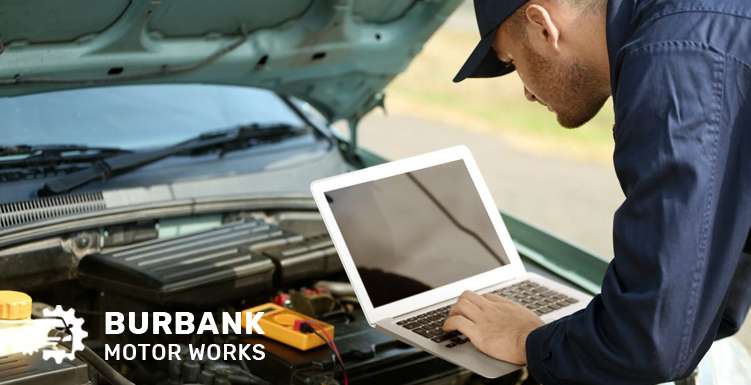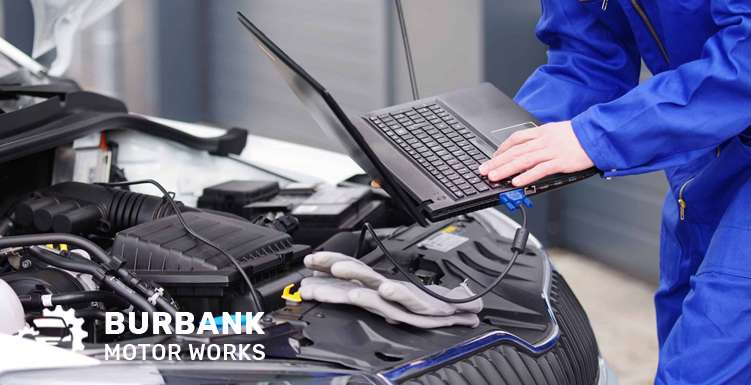
Address: 2208 W Burbank Blvd, Burbank, CA 91506

Mon - Fri: 7:45 Am - 5:30 Pm
Sat: 8:00 Am - 2:30 Pm
Sun: Closed
We'll Be Closed This Sunday – April 20th

Address: 2208 W Burbank Blvd, Burbank, CA 91506

Mon - Fri: 7:45 Am - 5:30 Pm
Sat: 8:00 Am - 2:30 Pm
Sun: Closed
Oxygen sensors, also known as O2 sensors, play a crucial role in car performance. These small components act like the car’s nose, measuring the oxygen levels in the exhaust. Properly functioning O2 sensors ensure that the engine uses the right amount of fuel, which keeps your vehicle running smoothly, improves fuel efficiency, and reduces pollution for a greener environment.
When an O2 sensor isn’t working right, it can cause problems. The engine might not run smoothly. The car might use more fuel than it should. Or, it might pollute more. Understanding how O2 sensors work, how to check if they are working right, and when to replace them is important for keeping a car in good shape. Here’s a simple guide to help you understand the role of O2 sensors in car performance.

O2 sensors are small parts found in cars. They measure how much oxygen is in the exhaust gases that come out of the engine. The car’s computer uses this information to control how much fuel goes into the engine.
Most cars have more than one O2 sensor. There is usually one before the catalytic converter and one after it. The catalytic converter is a part of the car that helps reduce pollution. The O2 sensor before the catalytic converter checks the amount of oxygen before the exhaust is cleaned. The one after checks the oxygen level after the exhaust has been cleaned.
The O2 sensor works by sending signals to the car’s computer. The computer then adjusts the fuel mixture to make sure the engine is running efficiently. If there is too much oxygen, the engine might be running “lean,” which means it’s not getting enough fuel. If there is too little oxygen, the engine might be running “rich,” which means it’s getting too much fuel. The goal is to keep the fuel mixture just right.
O2 sensors are very important for several reasons. They help the car run better, save fuel, and reduce pollution.
When the O2 sensor is working well, the engine gets the right mix of fuel and air. This helps the engine run smoothly. It also makes sure the car has good power when you press the gas pedal.
A good O2 sensor helps the car use fuel efficiently. When the fuel mixture is just right, the car uses less fuel. This means you don’t have to fill up the gas tank as often, which saves money.
O2 sensors help reduce the amount of pollution the car makes. By keeping the fuel mixture correct, they ensure that harmful gases are burned up in the engine before they reach the exhaust. This helps keep the air cleaner.
Sometimes, O2 sensors can stop working correctly. When this happens, the car may show some signs that something is wrong.
Here are some common signs that an O2 sensor might be bad:
If you suspect the O2 sensor is bad, it’s important to check it. This can be done with a special tool called an OBD-II scanner. This tool can read the codes from the car’s computer. If the code points to the O2 sensor, it may need to be replaced.
A mechanic can also test the O2 sensor directly. They will check the sensor’s voltage and see how it changes when the engine is running. If the voltage is not within the right range, the sensor may be bad.
If an O2 sensor is bad, it should be replaced. Replacing an O2 sensor can be simple, but it’s important to do it correctly.
O2 sensors don’t last forever. Most O2 sensors last about 60,000 to 100,000 miles. If your car has driven that many miles, it might be time to replace the O2 sensor, even if it seems to be working fine. If the check engine light is on and the codes point to the O2 sensor, it should be replaced right away.
Here are the basic steps to replace an O2 sensor:

If a bad O2 sensor is not replaced, it can cause bigger problems over time.
Running with a bad O2 sensor can cause the engine to run too lean or too rich. Over time, this can damage the engine. A lean mixture can cause the engine to overheat, while a rich mixture can cause carbon buildup.
A bad O2 sensor can cause the car to produce more pollution. This not only harms the environment but can also cause the car to fail emissions tests. In some places, this could mean you can’t legally drive the car until it’s fixed.
A car with faulty O2 sensors may not perform optimally, impacting engine efficiency and overall vehicle performance. You might notice a loss of power, rough idling, or even stalling. These issues can make driving less safe and less enjoyable.
There are some things you can do to help prevent O2 sensor problems.
Keep up with your car’s regular maintenance. This includes changing the oil, replacing the air filter, and getting tune-ups. Regular maintenance helps keep the engine running well, which can extend the life of the O2 sensor.
Using good-quality fuel can also help. Poor-quality fuel can leave deposits on the O2 sensor, causing it to fail sooner.
Don’t ignore the check engine light. If it comes on, get the car checked right away. It could be an O2 sensor problem or something else, but it’s important to address it quickly.
O2 sensors are essential for the performance and efficiency of your car. They help ensure optimal fuel use, smooth engine function, and lower emissions. Regular checks and prompt replacement of faulty O2 sensors will keep your vehicle running well and reduce environmental impact.
O2 sensors usually last between 60,000 and 100,000 miles. However, they can wear out sooner if the car isn’t maintained properly or if poor-quality fuel is used.
Yes, you can drive with a bad O2 sensor, but it’s not a good idea. A bad O2 sensor can cause poor engine performance, increase fuel consumption, and lead to more pollution.
Common signs of a bad O2 sensor include a check engine light, poor gas mileage, rough idling, and a failed emissions test. If you notice any of these, it’s a good idea to get the sensor checked.
If you don’t replace a bad O2 sensor, it can cause engine damage over time. The car may also use more fuel, produce more pollution, and run poorly. It’s best to replace a bad O2 sensor as soon as possible.
Understanding the role of O2 sensors in your car is important for keeping your car running well. These small parts have a big impact on how the engine performs, how much fuel the car uses, and how much pollution it produces. By knowing how to diagnose and replace a bad O2 sensor, you can keep your car in good shape and avoid bigger problems down the road. Regular maintenance and paying attention to warning signs can help extend the life of your O2 sensors and ensure your car runs smoothly.
Call us for booking an early appointment and get all your car related problems solved by our experts.